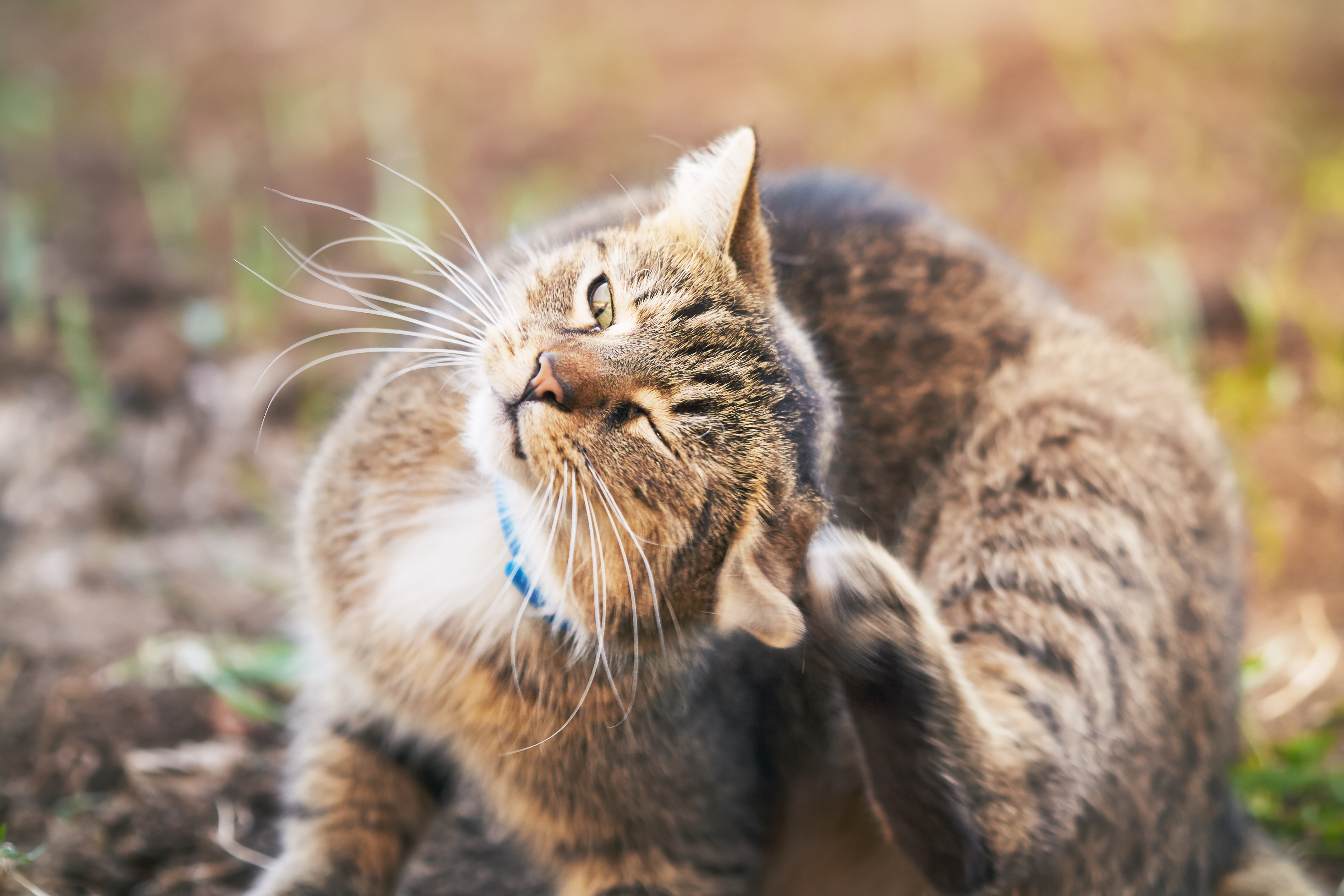
Learn the Top Signs of Feline Ear Infections
When it comes to ear infections, dogs are the usual suspects. Their floppy ears tend to trap water after swimming or fungi and cause gross infections that are itchy and uncomfortable. But cats get ear infections too—just not as often. Learn how to spot an ear infection and get the right help as early as possible before it gets worse.
Because cats are less likely to develop ear infections, many pet parents don’t know what feline ear infections look like. Additionally, there are multiple potential causes and types of ear problems in cats, so it can be difficult to know exactly what you’re dealing with.
Spotting an ear infection

Some symptoms of feline ear infections will be behavioral, so you’ll need to observe your cat to pick up on its signs of discomfort. However, cats tend to mask their pain, so the easiest way to spot a feline ear infection is to check on your cat’s ears for physical changes.
You should make ear checks and cleaning a part of your cat’s grooming routine. That way, you’ll know what is normal for your cat’s ears and will be able to more easily spot changes and early signs of infection. Typically, your cat’s ears should be pale pink and have minimal ear wax.
Physical signs of ear infections in cats may look like:
- Black, yellow or reddish-brown discharge
- Black/brown grainy discharge
- Redness of the ear flap or canal
- Swelling of any part of the ear
- Excessive wax buildup near the ear canal
- Strong, foul odor in the ears
If you see any of these signs when examining and cleaning your cat’s ears, you should contact a veterinarian right away. Your vet will likely need to conduct an examination of their own and test the discharge in the ear to determine the cause of the infection before creating a treatment plan.
Cats may also begin acting a little strange if they have an ear infection, paying a lot of attention to their ears and vocalizing or seeming in distress. Look out for these behavioral signs:
- Persistent scratching of one ear
- Repeated pawing at the ear
- Shaking the head
- Consistently tilting the head toward the infected ear
- Unwillingness to have its ears touched
- Appears to have hearing loss (may not come when called or react to noise)
- Appears off balance or disoriented

Again, if you notice these signs, contact your vet to set up an examination. The appearance of hearing loss and balance problems are generally more severe because they can indicate more severe ear infections or infections that have progressed to the inner ear over time.
Causes of ear infections
If cats get ear infections so frequently, what causes them in the first place? Generally, feline ear infections stem from ear mites - tiny parasites that spread easily between cats - or through secondary infections.
Ear mites
These pesky critters live in the ear canal of your cat and feed off the dead cells and blood from the skin there. By feeding on the ear canal, ear mites can cause incessant itching, causing your cat to go haywire with scratching. If left untreated, ear mites can actually chew through the tissue in the ear and cause ear infections.
When ear mites are present, the discharge in your cat’s ear will look reddish-brown, similar to coffee grounds. If you notice this while checking your cat’s ears, you’ll want to contact the vet and get an ear cleaning solution to kill the mites. Your cat may require additional treatment to clear up any secondary infections that may have occurred.
Secondary Infections
Outside of infections caused by ear mites, ear infections are usually secondary infections caused by another underlying health problem such as allergies, polyps, foreign objects or other, more serious problems. Both bacteria and fungi can cause outer or middle ear infections, which typically come with more redness and swelling than is seen with ear mites, as well as foul odors.
Cats that have chronic health problems such as allergies, feline herpesvirus or other immune problems may be more susceptible to chronic ear infections. The inflammation that is caused by the initial health problem can increase ear wax production, leading to the entrapment of a lot of bacteria and yeast. When these microorganisms have a place to flourish, they can take over and cause infection easily.
Fortunately, with regular checks and cleaning of your cat’s ears, you should be able to mitigate the possibility of ear infections or at least catch them early enough to treat without any severe side effects!


